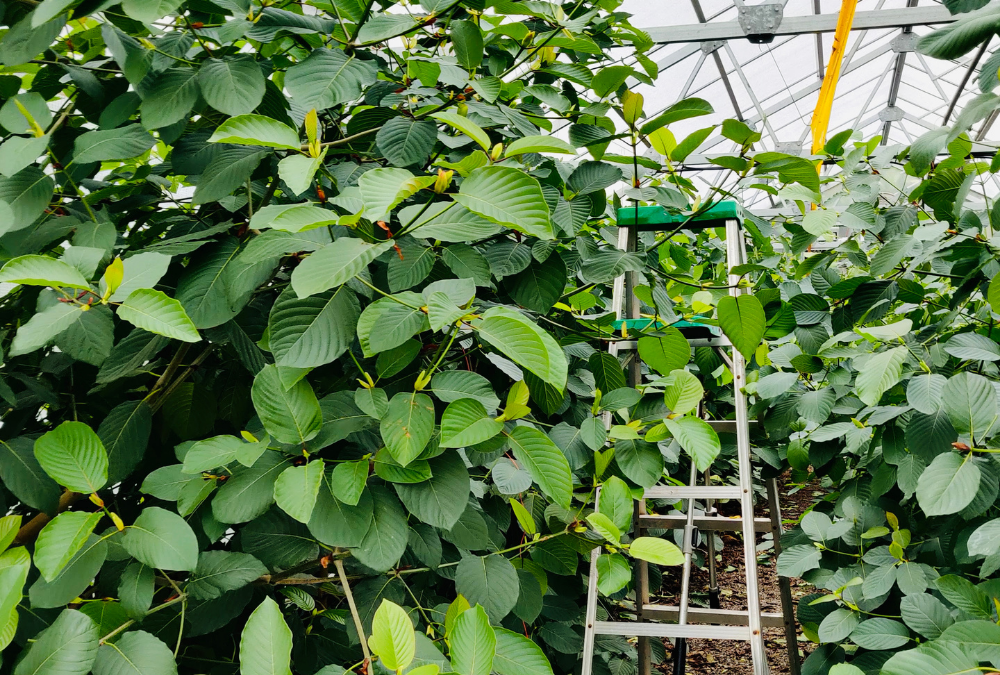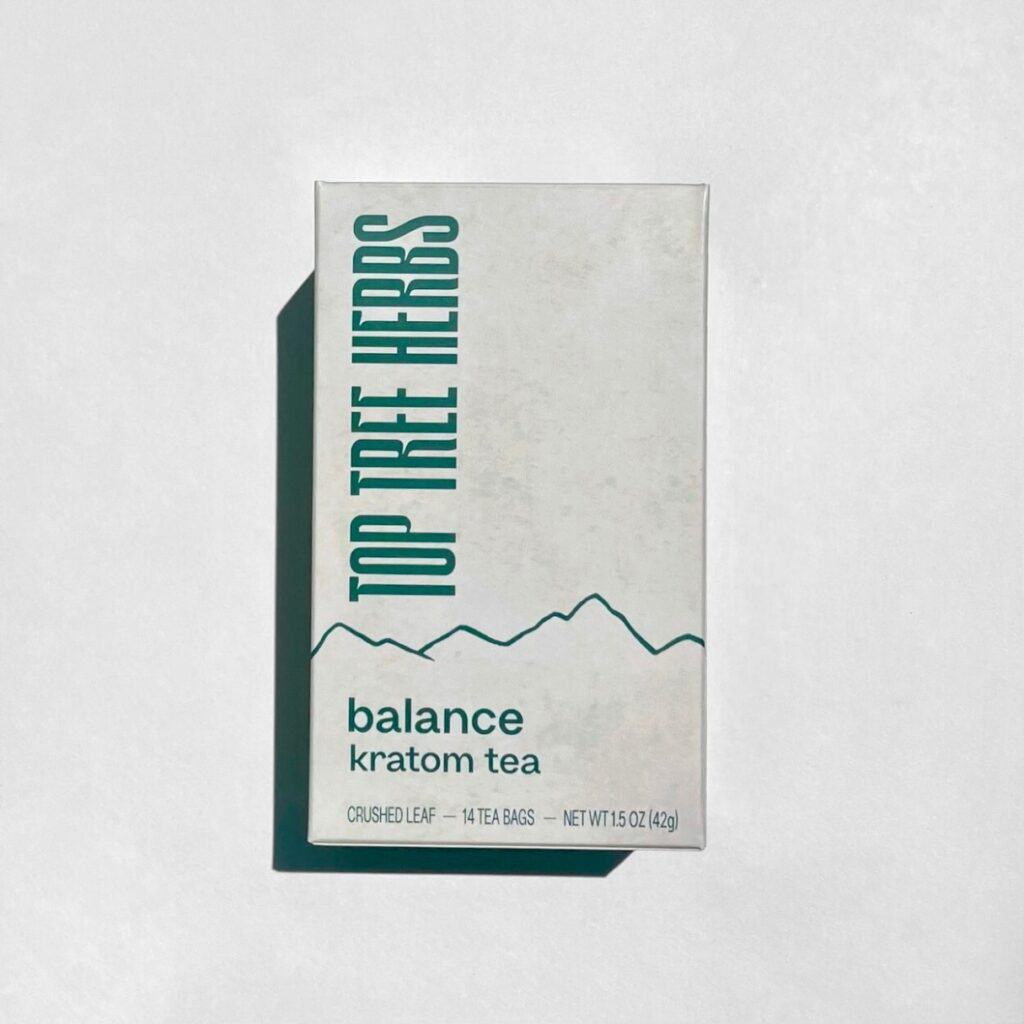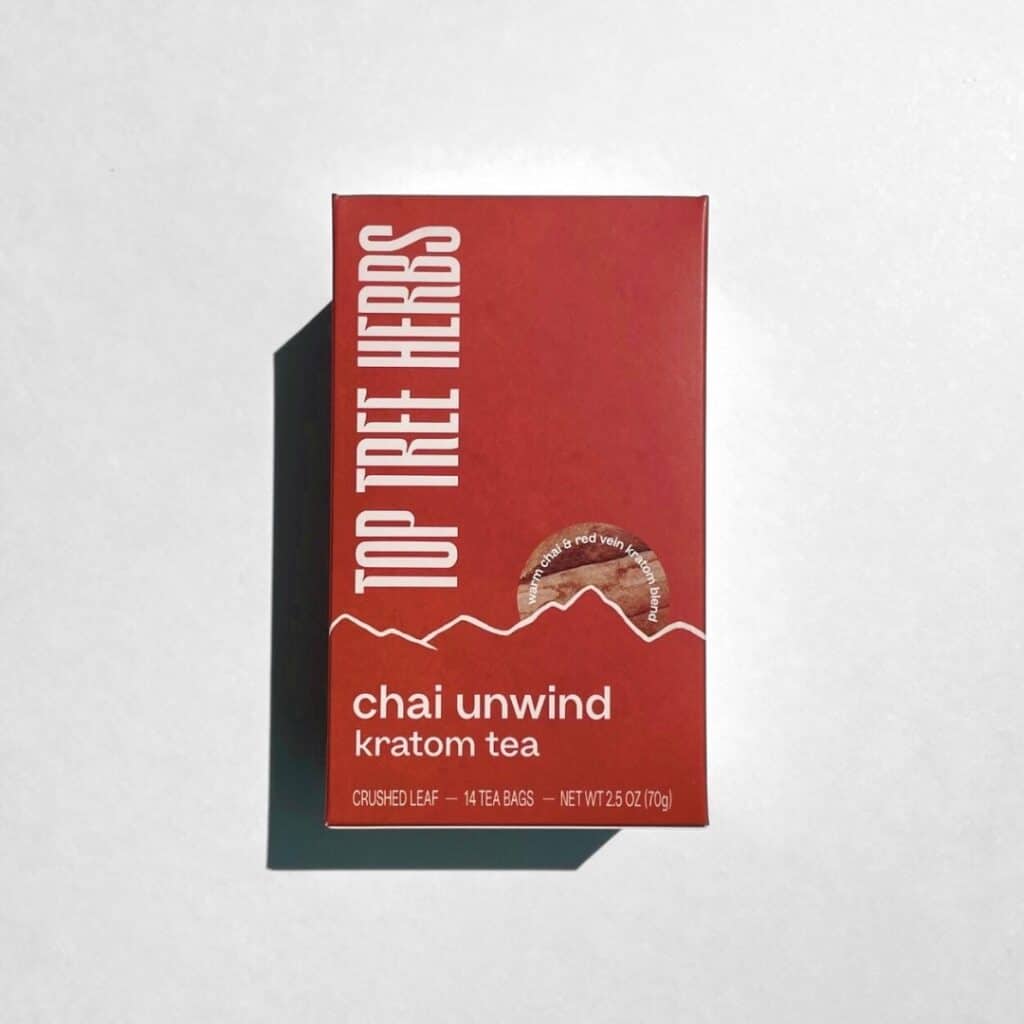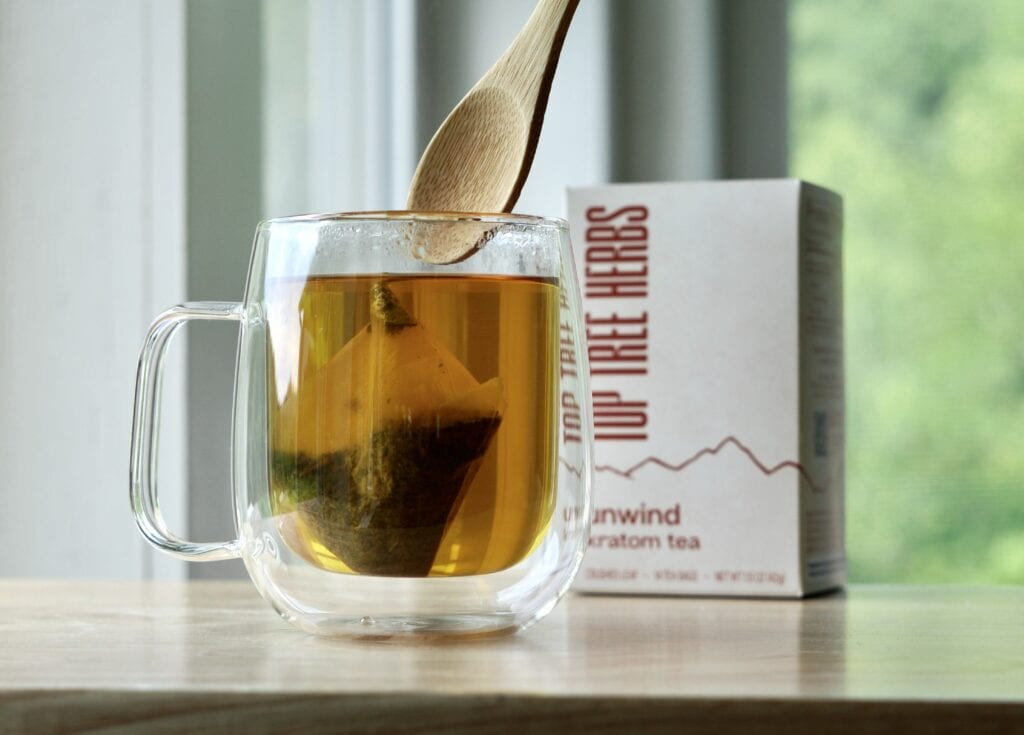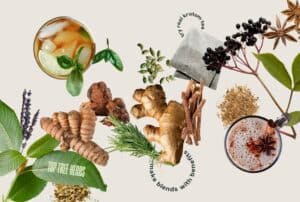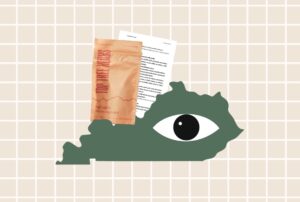Today we’re going to discuss the most controversial topic in kratom – safety. As the first kratom tea bag brand, we’ve spent a ton of time studying the subject. And considering many of you are here to learn about develop a kratom-based wellness practice, the last thing we want to do is sell something unsafe. So, is kratom safe?
What Does Kratom Do?
The goal today is giving you the tools you need to answer the question for yourself, based on your unique situation. To set the stage, we’ll start by introducing a few concepts related to risk that you might not already know. We’ll show how a zero-risk world isn’t possible, which means risk is all about mitigation, not elimination.
After reframing how we think about risk, we’ll add kratom into the mix, starting with a concept called history of safe use. This is a process for assessing risk by looking how a plant, as a food ingredient, is traditionally consumed.
After discussing how and why kratom is traditionally consumed, we’ll shift to modern times to discuss two important areas of kratom safety: contamination and research. We’ll break down kratom product testing, common contamination issues, and how to mitigate the risks they present.
By the end of this post, you’ll have a more nuanced perspective on the risks associated with kratom – an essential part of developing your own, personal kratom-based wellness practice. With that in mind, let’s start simple: what is kratom?
What is Kratom and What are the Benefits?
Before we try to answer “is kratom safe,” we should cover some basic definitions. Kratom is the Thai word for both the tree and the leaves of Mitragyna speciosa.
Kratom is not a “kratom extract” that you see at the gas station. Nor is it an adulterated “legal high” product sold at a headshop. Examples of these, like the infamous “krypton” product sold in Sweden, are adulterated. They’re high potency products which bad actors occasionally bring to the market.
Mitragyna speciosa, or kratom, is a facultatively deciduous tree that grows year long in Southeast Asia. It is a tropical tree that thrives near bodies of freshwater, requiring constant warmth and humidity. The trees have an almost insatiable thirst for ten months a year.
They can grow quite large, and have been measured in the wild at excess of 80 feet tall. Kratom leaves, which share the same moniker, are prized for their effect when chewed or brewed into a tea.
In Thailand, kratom culture has a written history dating back well over three centuries. Some experts on the subject believe that kratom use stems back much further, hinting at millennia of use, not just centuries.
Throughout its history of use, kratom leaves have primarily been chewed and spit out or brewed into a tea. Most of those who consume kratom do so because they wish to work a little bit harder. Understandably, farmers and laborers make up a large portion of the traditional kratom consumer demographic.
Is Kratom Bad?
When asking “is kratom safe,” we often assume everyone is operating from the same definition of danger and safety. It’s an easy assumption to make, but it’s not correct. Outside of extreme situations where the answer is obvious–ex. everyone agrees skydiving without a parachute is not safe–it’s more useful to view these concepts as relative.
When it comes to kratom, product quality is a perfect example. If your kratom is contaminated with mold or heavy metals, most of us would agree that consuming that kratom is bad. If you have clean lab-test kratom, however, this concern goes away.
Another clear example is if you take medication. Because we don’t know the risks of mixing kratom with certain medications, we recommend consulting your doctor before trying kratom. This is how relative risk works; it’s how you build a more nuanced perspective about a plant like kratom.
For a less extreme example, consider kratom serving size. If someone doubles or triples the recommended serving size repeatability, they’re creating additional risks. If used responsibility, however, the evidence goes in the other direction.
In short, risk is often used a blanket term that supposes everyone agrees with the underlying assumption of similar vulnerabilities. Because we share so much in common with our neighbors, we often overlook the fact that risk is relative.
Can we say kratom is safe?
As many of you know, the World Health Organization recently considered an international ban for kratom. They ultimately concluded that “there is insufficient evidence to recommend a critical review of kratom,” and this decision was based on a review of kratom’s relative risks.
They reviewed the abuse potential of kratom, its therapeutic benefits, and its history of use. Although they never said kratom is safe, they acknowledge that the main risks are related to overconsumption or mixing with kratom with other substances.
In other words, kratom itself isn’t dangerous, but it presents risks if used irresponsibility. Importantly, the same is true for everything from candy to energy drinks to alcohol. For the average person interested in kratom, the call to action is clear.
Make sure you buy contaminate-free kratom from a reputable brand and consume responsibility. We know, it’s not rocket science. To go a step further, even if we agree it’s safe, it’s still worth asking if there’s a way to make kratom making it safer. To answer that, we need to return to the concept of history of safe use.
History of Safe Use of Kratom
When a new or novel food is introduced to society, it must be assessed for safety. While this is obvious, the exact method for doing so isn’t always so straightforward, which is why researchers often start by studying how the food has been traditionally consumed.
Even though there will never be a black and white answer to the question “Is kratom safe,” we can use data and history as evidence for what we do today. We can ask how kratom bas been used in the past, and why that method was used.
Ultimately, the goal is knowing if there were any negative consequences. We introduced this earlier as the concept of history of safe use.
What is “History of Safe Use”?
“Most foods that are consumed have not been subject to systematic toxicological and nutritional assessment but are generally regarded as safe to eat because of their long history of consumption and knowledge around preparation. This “history of safe use” of traditionally consumed foods can serve as a benchmark for comparative safety assessment of more novel foods and ingredients. It should be remembered that although traditionally consumed foods are considered safe, they may contain components such as antinutrients, toxins, and/or allergens…. Thus complete freedom from risks is an unattainable goal, safety and wholesomeness are related to a level of risk that society regards as reasonable in the context, and in comparison with other risks in everyday life (FAO 1997), and this needs to be considered when introducing new foods/ingredients.” (Bobbie Bradford, History of Safe Use)
Traditional Kratom Use
First, the history tells us kratom is good enough to survive the tests of time. Kratom tea has been brewed and consumed throughout Southeast Asia for centuries, which indicates there is a right way to use kratom.
Beyond their preparation method, we can also study health data from people who use kratom in the traditional manner, chewed or brewed. With such a long history, we can reasonably assume that any symptoms, dangers, etc associated with kratom would be detectable in the data.
The studies have been done, and the results are revealing. As researchers who studied kratom in Thailand wrote in 2012, “eating kratom is a tradition that has been practiced for centuries in southern Thailand and up to 70% of the male population in some districts use kratom daily. Indeed, many people in southern Thailand consider chewing kratom similar to drinking coffee.”
The question, however, is what do these people say about kratom safety? According to the same study, “people reported that kratom (use and dependence) is less harmful than heroin, yaba, cannabis and even alcohol.” For anyone whose goal is optimizing kratom for a healthy and wellness practice, this finding is your guide for how to use kratom today.
What Is Kratom Used For?
There are many different reasons why someone may use kratom. They range from seeking an energizing effect, to optimizing a wellness routine, or even as a bedtime tea.
Kratom for Work
The traditional use of kratom typically revolves around labor. In Thailand, it is no secret that farmers often have their own kratom trees. They regularly pick and chew leaves from them. These farmers feel that kratom allows them to work harder and longer. It is used very similarly to how coffee is used in the United States.
As with everything that allows you to work harder and longer, you have to take responsibility for not pushing too hard for too long. Kratom may work well as an energy boost for you, but sleep deprivation or overexertion are real problems you have to consider.
For example, coffee may permit you to stay up all night studying for a test, but you shouldn’t blame the caffeine if you pass out from exhaustion the next day during the exam.
How Should I Take Kratom?
The way that you consume something plays every bit as large of a role in the safety of it as the thing itself. For example, drinking three or four beers in a row is unlikely to cause any sort of serious physiological harm.
However, consuming the same amount of alcohol in a different way can be quite damaging. An example of this is “vaping liquor.” If you were to inhale the same amount of alcohol that is in the three beers, then you’d be at risk of alcohol poisoning. This is due to the way the body processes what goes into it via different routes.
There are many different ways to take kratom. Yet traditionally, there are two. The two traditional ways to take kratom are chewing the leaves and then spitting them out, and brewing the leaves into a tea. This is the nuance of the history of safe use argument.
Kratom has centuries, if not millenia, of evidence supporting the existence of its safety. Yet the formulations of its use throughout history has really only been chewing fresh leaves or brewing the leaves into a tea. So the argument for kratom’s history of safe use starts and stops at chewing leaves and sipping on tea.
How to Use Kratom Correctly (Traditionally)
In the United States, kratom is consumed differently than in South East Asia. The majority of kratom in the United States is sold as a micronized powder which is tossed and washed.
This powder is also used to make extracts, which are high potency products that can be anywhere from 5 to 100 times stronger than the powder would be by weight.
These extracts also make their way into gummies, sodas, and other sweet treats to mask the flavor. Finally, some people prefer kratom powder in capsules. Using capsules helps to facilitate the swallowing of the powder without having to taste it.
When it comes to tossing and washing the kratom powder and swallowing capsules, there is new variable at play. See, traditionally, kratom leaves are rarely ever swallowed.
By suddenly introducing the consumption of the actual plant matter into our body, we go beyond the scope of what the safe history of use can tell us. Simply because there isn’t a history of swallowing dried kratom leaf powder.
Using Kratom Responsibly
To optimize the knowledge gained from the vast history of safe use of kratom, we have to be very specific about how exactly it was consumed. Since fresh leaves are off the table for most people in the United States, chewing the leaves isn’t possible.
However, consuming kratom as a tea recognizes that the traditional preparation avoids swallowing leaf material. Kratom powder and extracts focus on what you’re getting from the kratom. While kratom tea also facilitates getting the alkaloids from the plant, it also assures that you’re not getting bits of the leaf that have never traditionally been consumed.
Drinking kratom tea is a recognition of the tradition of safe kratom use. Breaking from this tradition leaves the safe path forged through centuries of safe use. As a result, consuming kratom outside the umbrella of tradition increases the risk, as being first or an early participant in a trend means treading into the unknown.
Swallowing kratom powder means you digest everything in the leaf. Using an extract means you digest everything that dissolves into methanol. Whereas drinking kratom tea means you only digest what is soluble in water and has been digested for centuries before you.

Kratom Benefits
The benefits of kratom vary widely depending on who is using it and for what reason. The benefits which drove its long history of traditional use center around a farming lifestyle. For Thai farmers, they are looking for increased productivity vis-à-vis energy.
Within the framework of labor, the benefits are the same as having a cup of coffee. If you’re looking for the energizing effect of kratom, try starting with a white vein kratom tea strain. However, kratom tea has many more benefits than just providing an energizing boost.
Kratom for Wellness
Kratom tea is also part of many peoples’ modern day mental wellness routine. It may bring balance to a turbulent sea of emotions. Even the simple act of being present while brewing your tea can be calming and settling. Many people reach for a green strain of kratom tea when they are looking to unwind and relax.
Like anything else that helps you chill out, it is good to incorporate it into a routine, and have it function as one tool of many in your toolbox. For example, if going to the gym is the only way you can destress, if you suddenly can’t workout for an extended period of time, you’ll be in trouble. All things in balance.
Another benefit of kratom tea is the effect it has on the body. Many claim that kratom has a security blanket like effect – supporting relaxation and nurturing pleasure in the body.
We can see this element in play in the traditional context as well. The farmers are not only gaining benefit from kratom being energizing, but it also reduces their perceived beating from the sun.
Kratom Tea User Survey
Outside of the traditional context of kratom use there have been relatively few studies into the benefits people seek and derive from it. Dr. Grundmann surveyed a little over 8000 kratom consumers in 2016 concerning the benefits that they derived. Here is a link to that paper.
The consumers in the survey are highly active members of the kratom community, so the results likely reflect those who derive extreme benefit from it. Those who use it interchangeably with coffee likely have about the same amount of passion for it as coffee, and are therefore less likely to fill out a time consuming survey.
Thus, this survey likely omits a lot of data from those with positive but not ecstatic reviews.
Is Kratom Tea Safe?
So far we’ve discussed the vast history of safe use of kratom embedded in the traditional use of kratom tea, as well as the benefits people may get from it. But let’s return to the question “is kratom safe?”
There’s no doubt that this is the most important question to ask before consuming something you’ve never had before. So let’s not mince words, and get into the root of this question.
Like we said earlier in this post, there is no blanket yes or no answer to this question. The world is not black and white, and nothing is completely safe. Yet there are factors that you will want to consider when buying kratom.
The most important of them all is contamination and adulteration. To build on what we said before, your kratom should be tested for pathogens (mold), heavy metals, and pesticides. (You should also test for potency but that relates more to product quality than it does safety.)
Contamination and adulteration are the two factors that contribute to nearly all of the issues that arise concerning the safety of kratom. So let’s look at the health benefits, as well as the reputed safety issues with kratom.
Kratom Tea Health Benefits
When it comes to discussing the health benefits that exist for kratom, we are, unfortunately, bared from that conversation as a vendor. We deeply believe in the benefits of kratom. As such, we have dedicated ourselves entirely to educating the public on all things kratom. We also make high quality kratom tea available in a manner that honors its historic tradition.
Yet the rules of the FDA bar us from making any sorts of medical or structure functions claims concerning what we believe kratom does and is capable of doing. This is because kratom hasn’t gone through the clinical trials required by the FDA before making such statements.
We are believers in science, and as such sympathize with this requirement. In the grand scheme of things, this rigorous requirement has prevented some harmful drugs from entering the American market, like thalidomide.
Today, the FDA controversially prevents kratom from going through the trials they require, while also lobbying against it through various prohibitionist arms. It is hard to say that they are playing fair.
But, back to our point. Since kratom hasn’t been allowed to undergo the trials necessary to make direct health or medical claims about it, we are not legally allowed to discuss our opinion of what it is capable of. As such, you’ll have to educate yourself independently of our website.
Best Kratom Resources
Check out these great resources for learning more about the medical and scientific angle of kratom! And for a list of kratom studies, check out the American Kratom Association’s science page, available here.
Kratom Science Podcast
There are two episodes on the kratom science podcast with Top Tree co-founder Soren Shade. If you’re interested in learning more about Top Tree and why kratom tea is preferable to swallowing kratom powder, check them out.
Otherwise, he has dozens of conversations with every kratom scientist in the game. Spend a few hours with Brian, the host, playing in the background, and you’ll quickly be caught up on everything published concerning kratom in the literature.
Hamilton’s Pharmacopeia – Kratom: The Forbidden Leaf
This episode of the journalist-turned-psychedelic-research-chemist Hamilton Morris’s hit science documentary has a special place in our hearts. Hamilton is a dear friend of Top Tree, and co-founder Soren Shade produced the third season of his television show.
(Unfortunately, “Kratom: The Forbidden Leaf” was part of season two.) The show is available on Hulu, but you can also find lower quality rips on vimeo and occasionally youtube.
Hamilton Morris Interviews Dr. Grundmann Youtube Video
In his interview with leading kratom researcher Dr. Oliver Grundmann, Hamilton digs deeply into the basic pharmacology of kratom. Dr. Grundmann also discusses the importance of surveys, and what we can learn from them.
To participate in Dr. Grundmann’s ongoing kratom tea survey, follow this link! Every participant helps!
Google Scholar for Kratom
This might be pedantic to some, but simply going to scholar.google.com and entering kratom as a keyword yields loads of great scientific research conducted on kratom. Some of our favorite researchers are presently based out of the University of Florida and Columbia University. Be sure to read anything you can by Dr. Oliver Grundmann or Dr. Chris McCurdy.
Dr, Chris McCurdy ESPD50 Talk
Chris McCurdy’s talk in 2017 is a great place to start learning about some of the research concerning mitragynine and 7-hydroxymitragynine. These are two alkaloids present in the leaf, and were the focus of Dr. McCurdy’s research at the time.
Is Kratom Tea Bad For You?
We’ve been discussing the safety of kratom, and presented our take on the health benefits before this. However, to beat out every bit of information that you’ll need to make a decision for yourself as to whether kratom is safe, we have to address the hard hitting questions. “Is kratom bad for you?”
In the United States, isolated chemicals in pill form are generally preferred to an herbal or natural product equivalent. This is regardless of the fact that a majority of all drugs on the market took inspiration from a natural product. However, this medical ideological bias does not mean that herbal remedies are ineffective or bad.
It just means that they are, in a sense, briefly out of style. If the current trends towards the legalization and decriminalization of cannabis and psychedelics continues, we believe that the repressive medical attitude towards herbs will change.
Kratom Risk Factors
To reiterate the important points, we’ve covered the fact that nothing is black and white. Kratom is neither completely safe nor completely dangerous. It all depends on a number of variables.
To name a few that matter: serving size (i.e. consuming an excess amount), frequency of consumptions, reliability of the quality of your kratom (i.e. adulterated or contaminated product), and concurrent use of certain medications all factor into the safety of kratom.
In truth, these factors all play a role in the safety of absolutely any food item that you consume, so this shouldn’t be news. (And always consult your doctor before drinking kratom tea if you’re taking any medications.)
First Time Having Kratom
When it comes to drinking kratom tea, we always recommend you start low and slow. The first time you brew a kratom tea, try using just one kratom tea bag. Chances are you’ll feel it, and if you don’t, you can always have more. One thing you can’t do is have less.
If one tea bag isn’t enough for you, try two or three next time. We’ve learned that some people enjoy 1 tea bag brewed multiple times, and others end up brewing with 5+ tea bags. It’s all personal preference.
The larger point here is that there is no reason to rush into it. For example, the first time you had a coffee, would you have wanted an extra shot of espresso in it? No, of course not, your hands would probably leak sweat and your anxiety would go through the roof. Don’t over do it.
Let’s continue with the coffee metaphor, which is appropriate given that they’re close botanical cousins in the Rubiaceae family. If you drank coffee from the moment you woke up, every hour until you went to bed, you’d quickly become reliant on it for energy.
Without it, you’d experience withdrawal symptoms, and generally feel under the weather for a short period of time. This isn’t unique to coffee, you can develop a similar reliance on sugar as well! Kratom isn’t a special unicorn immune from the way most everything works. You should be very aware of how much kratom you consume, and how regularly you do so.
Is Kratom Safe: Contamination
By far and away the most important factor to consider when considering if kratom is bad for you is the quality of your product. Of course, this is a bit misleading, since contaminated or adulterated kratom doesn’t mean that kratom is bad for you.
But the contaminated or adulterated kratom product in question certainly is. This can get confusing, even our federal regulatory agencies seem to conflate this point.
Here’s an example among many possible examples. In 2009, an adulterated kratom product dubbed “krypton” was brought to the Swedish market. It contained powdered kratom mixed with the powderful tramadol analogue N-desmethyltramadol.
Nine people overdosed and died as a result of taking it. The consumers were unaware that a potentially deadly drug was mixed with their kratom. Even in the face of evidence to the contrary, the DEA, CDC, and FDA claimed that the deaths were the result of kratom, and not the adulterant.
However that may be, the point is that you should take caution to only purchase your kratom from reputable kratom vendors.
Finally, contaminated kratom products do occasionally appear on the market. This is not unlike the occasional mass recall of onions or lettuce. A good rule of thumb is to consider just how cheap you can get kratom without worrying that quality control was neglected.
Dangers of Kratom
To summarize, the dangers of kratom lay in misuse, adulteration, and contamination. By simply purchasing your kratom from a reputable source you can avoid contamination and adulteration. However, it is education and acting upon those lessons that prevent misuse.
We mentioned earlier that you should be cognizant of how much you are paying for your kratom. This is a novel thing to consider in our day and age. For most, one of the most important factors that goes into making a purchase is how cheap the product is.
When we go to grocery stores, we’ll buy the cheapest jar of spaghetti sauce without thinking twice. We have the luxury of being able to do this because there is a regulatory body that ensures that the spaghetti sauce isn’t going to make you sick.
We can have a reasonable degree of confidence that we’re getting what the label says we’re getting. And if we have reason to believe that the spaghetti sauce wasn’t as advertised, we have an outlet to address our grievances.
FDA and Kratom
Unfortunately, our federal regulatory agencies do not protect kratom consumers the way they do other consumers of other food and beverages. We have extensive writing on the overarching issue of kratom’s place in our legal system on our blog.
In short, kratom is the neglected stepchild of the system. Vendors and advocates have tried and failed to get the FDA to treat kratom like other food products. To date, the FDA has also found reason to deny all of the NDI requests of kratom products.
In effect, this means that the vetting out of safe products has fallen on the shoulders of the kratom consumers themselves. There are many ways to stack the deck in your favor when choosing a kratom product.
Getting Pure Kratom
Returning to price, cheap kratom should not be your goal. To understand why cheap kratom isn’t desirable, imagine the supply chain that delivers kratom to your doorstep. For 99% of the kratom products in the United States market, the kratom is sourced from Indonesia.
Many of these leaves are grown on kratom plantations. However, a smaller portion comes from kratom harvested in the wild. While the popular understand that anything which grows on trees represents simplicity and ease (e.g. “Do you think that money grows on trees?”) harvesting kratom is labor and time intensive.

Kratom Harvest Steps
Once harvested, the kratom is then washed, laid out to dry, and then processed into either crushed leaf kratom or micronized kratom powder. This kratom is then sold in bulk to exporters who facilitate it’s arrival to the United States.
In the United States, the kratom should then be tested for any possible contaminants before being parcelled out into the packaging that then lands on the market. As you can see, there are many steps which must be followed to safely get satisfying kratom to you.
Without a regulatory body and with an incentive to make kratom as cheap as possible, many corners are cut. When US companies race to find the cheapest kratom available, they are devaluing the time of the kratom farmers.
At some point, farmers find themselves being offered prices for their kratom that is too low, and not worth it. The downstream effect of refusing to pay a living wage for their kratom is the incentivization of kratom farmers to mix “fillers” into their harvest.
Once powdered, it is difficult to detect whether half of the kratom powder is random plant material or not. Mixing in random leaves from the forest allows kratom farmers to meet the demand for low price points.
When buying cheap kratom powder, this is a very important factor to consider. Did you luckily stumble upon an incredible deal, or are you ‘getting what you paid for?’
Kratom Testing
It is our mission at Top Tree to amend the relationship of the average kratom consumer with the kratom plant and tradition. Aside from only using AKA cGMP tested kratom, we also exclusively use crushed leaf kratom.
Aside from the tea brewing and tasting benefits, using only crushed leaf kratom prevents any leaf mixing deception. Crushed leaf kratom is very distinctive in appearance and shape.
Kratom Lab Testing
Kratom testing is an easy yet immensely important process. Since kratom isn’t regulated by the normal regulatory bodies, the testing criteria depends on each individual vendor.
Before founding Top Tree, our co-founder Sam Weber cut his teeth in the world of natural products and herbalism by working with a high tech cannabis decontamination start-up. The lessons and diligence he brought from cannabis into our Top Tree kratom tea quality control process are priceless.
What is Kratom Tested For?
We have a zero tolerance policy for suspicious kratom. Our kratom is tested multiple times throughout our production process to ensure it exceeds AHPA standards for herbal products.
Contamination testing typically focuses on three aspects of the product: heavy metals, mold and pathogens, and potency. There are known health issues related to each of these categories of contamination. Even small amounts of heavy metal contamination can build up in the body over time. Mold and pathogens can cause sickness.
Finally, it is necessary to know the potency of your kratom to ensure you do not over consume and make yourself feel bad.
Heavy Metals in Kratom
There are a number of reasons hypothesized why heavy metals have been making an appearance in contamination studies of kratom. A popular hypothesis is that the volcanic soil of Indonesia leads to the accumulation of metals in the kratom tree.
If this is the case, then certain regions will have to amend their growing process to account for this unfortunate effect.
Another variable feeding into the issue is a technological one. Many of the farmers in Indonesia will use WWII era processing equipment to grind their dried kratom leaves. Imagine using 80 year old coffee grinders to process tones of dried kratom leaves.
If you consume kratom often, and especially if you swallow the leaf powder, these heavy metals can accumulate in you as well.
Kratom Alkaloid Tests
When kratom arrives in the US there isn’t much of a process in place to standardize it by alkaloid content. And because the alkaloid concentrations of natural leaf vary widely, it would require a unrealistic amount of blending to creative standardized kratom strains.
There are many factors at play when it comes to kratom strength. Factors such as nutrient content of the soil, sunlight exposure, time of harvest, and geological location have big impacts. Furthermore, most kratom alkaloid tests only focus on two out of the forty some possible kratom alkaloids.
There is no perfect way to homogenizing a naturally variable plant’s production of its alkaloids. At Top Tree, we try to take some of the guesswork out of judging the strength of kratom.
In partnership with Santé Labs in Austin, Tx, we provide a comprehensive eight-alkaloid test results for each of our batches of kratom.
We’re also collaborating with Dr. Oliver Grundmann from the University of Florida to correlate the alkaloid ratios in our tea to the effects reported by kratom tea drinkers.
American Kratom Association
The American Kratom Association (AKA) heads the industry-funded attempt to self-regulate American kratom. Without the help from the typical governmental oversight boards, the AKA approximates the regulatory standards for kratom and makes sure that vendors adhere to these standards.
To be an AKA cGMP certified vendor, you have to pass annual third party audits of your packing and testing facilities. These standards are all built to reflect the amount of quality assurance expected of any consumer food product.
Top Tree Herbs works with an AKA cGMP vendor to source our premium, crushed leaf kratom. We continue to follow the standard Good Manufacturing Protocols (GMP) while processing our premium crushed leaf kratom into our tea bags.
Since you are consuming kratom, you should take care to ensure that it is being treated as the food product it is. With the AKA’s cGMP certification stamped on our kratom tea bags, this is worry you can leave behind.
WHO and UN on Kratom
As of writing this in November of 2021, the UN and WHO are deliberating the legal status of kratom internationally. The reason that kratom is on the world stage at this level is a result of a coordinated disinformation campaign against the plant. For a complete history of this, please refer to our earlier posts on the topic. In sum, kratom has been on the receiving end of unfounded criticism many times before.
In 2016, the DEA announced that they would be making kratom a schedule 1 drug. After thousands of people made their voices heard in a united cry against this, the head of Health and Human Services, Dr. Brett Giroir, responded with a statement in 2017 saying that there was no scientific evidence for the danger of kratom.
Since kratom can not be made illegal in the United States, the forces against kratom have brought the fight to the international level. Every scientific paper done on kratom has shown that it does not possess qualities that would justify it being made illegal.
In rejecting the attempt to ban kratom in 2016, the HHS made it clear that they did not believe that it is dangerous. The HHS’s opinion in 2017 seems to answer the affirmative to the question, is kratom safe?
Kratom Ban 2021 Update
December 2021 Update: We’re unbelievably excited to share the news: the WHO Committee has officially “concluded that there is insufficient evidence to recommend a critical review of kratom.” In other words, we won! Kratom is here for the long haul – there won’t be an international ban. Stay tuned for a more in-depth break down of the news in the coming days. And thanks again for every kratom consumer who took the time to submit a comment for the WHO review board. Until then, let’s take a moment to celebrate – cheers!
Conclusion: Is Kratom Tea Safe?
The core of the recent kratom regulatory developments is the question “is kratom safe.” Considering how many people use kratom, it’s an important question. Unfortunately, the conversation has gone off track. We’ve noted the many variables that you should factor into your individual risk mitigating decisions.
The world is not black and white, and it is up to you to make decisions based on your level of education on the topic.
To gauge the question of “is kratom safe,” we’ve covered the benefits as well as the potential drawbacks of consuming kratom. At the end of the day, the main factors that could make kratom dangerous (overuse & contamination) are not unique to kratom.
Be aware of possible adulteration and contamination of your kratom. If you can clearly ensure that your kratom is clean, you are over the most important hurdle in reconciling it’s safety. Ultimately, anecdotes and the anthropological evidence of a long history of safe use shape this debate. Until next time, cheers to better brewing!
